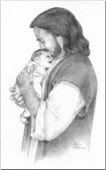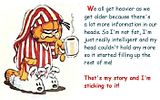Post by jfla on Jan 30, 2007 17:03:30 GMT -5
I have copied two posts that were buried into this post for members to easily find. Hope this helps.
Last spring I discovered that altho my son has an accommodation for a word processor, there will be times as an adult that he may need to write in cursive (as he did for part of the SAT). The school turned down a request for an OT to evaluate his writing and suggest what could be done.
The OT, though, did say two things of importance.
1- There is a jump in small motor skills betwen the ages of (if I remember correctly) 17-22.
2- She recommended a writing program named Loops and Other Groups
I figured this is my last shot at it with him. He is doing well in so many other areas, writing is finally near the top of the list and developmentally might be a choice time.
So I made up handwriting practice sheets for my two boys based on Loops and Groups. Yes, they griped and complained, but you know what? My dysgraphic kid is developing great handwriting which is no longer a struggle! He even said today, "Mom, you should be proud of me because I used cursive in a timed write today." And I am!
--------------------------------------------------------------------------------
I am glad that my post might help some parents and kids out there. The following links have information on Loops and Other Groups. I chose not to spend the $60 for the whole program because I couldn't see exactly what was included and figured I could put something together that would be effective. It is available through Amazon.com.
I like Loops and Groups because not only do they present the letters in groups of similar formation, but all of the lower case letters start on the lower line. This is important, because it lessens the need for memory and a decision on the child's part of where to put their pencil to start making the letter. They know that they always start at the bottom.
www.allthewritenews.com/loopandotgro.html
www.abilitiesinfo.com/therapy_loopsgroups.html
www.otideas.com/Items/handwriting.htm
This provides a sample of the cursive style:
www.educationalfontware.com/LG_style.html
I am happy to pass on anything that might help. I put this together based on the Loops and Other Groups font style, OT articles on the internet and my own teaching experience. Each boy has a spiral notebook where I wrote by hand all of the writing samples.
The approach I’ve used for my boys is very individual in the sense that they are high school teenage boys striving for greater independence and want to avoid doing things that seem too juvenile. I try to remain sensitive to this, since most people learned to write cursive properly in elementary school. I provide a page of letters in a particular developmental sequence for them to practice, but I decided not to judge their approach. If it is messy, so be it. Sometimes it is messy and sometimes not. I consider myself lucky that they will do it at all. I trust that one day they will develop a sense of pride in their work. As one teacher said, if they write in a journal every day, you will see improvement after a year. (They don't know it yet but that's what i have planned after they complete all upper and lowercase letters.) During a writing session I only check to see that they do not have a tight grip on the pen, are forming the letters properly and are seated appropriately. I do make a couple casual positive comments about the better letters or words and save any attention to specific letters for the next day. I’ve also started doing it after dinner because they are already at a table, their tummies are full and they are definitely not in a hurry to do kitchen chores!
General Guidelines:
1- About six lines of writing per page (spiral notebook)
2- Double spaced See example below. There is a space between the sample and the line of dots where they will write.
3- Dots on the line show where they are to start their letter. The sample to copy is directly above the dot. The dot is in a different color ink.
4- Correct for pencil grip, pressure and body position. If I can snatch the pencil easily out of their grip then it is not too tight.
5- Provide enough repetition for practice but not in a way that is too repetitous so that they lose interest.
6- Present letter/words in a developmental approach that builds on what they have previously learned.
7- Writing sessions started out very short (one minute or less so it was not too painful)
8- Writing sessions start out with a warm up of about four lines of continuous overlapping circles and loops clockwise and counter clockwise. Also repeated i's without the dots.
9- Brief correction and supplemental practice of one or two letters from yesterday. I have saved this brief corrective session until they showed a positive interest in sessions.
Developmental Model
1- Practice the first stroke of the letter. (reserved for some letters)
2- Include the second and third stroke.
3- Repeat copying the letter in isolation.
4- If the letter is sometimes doubled in words, copy that.
5- Common two letter combinations/words with previous letters learned
a. Letter in the initial position with a vowel following
b. Letter in the final position with a vowel preceding
c. Common combinations with previously learned letters
6- Common three letter combinations/words with previous letters learned
a. Same as 5a-c
b. Add letter in middle position and/or double letters
7- Common four letter combinations; same as above after eight letters are learned
8- Review
a. Isolated letter practice
b. Word practice
Example:
Sail the Seas with “S” (Thirteenth letter in Loops and Other Groups sequence)
s s s s s s s s
. . . . . . . .
ss ss ss ss ss ss ss ss
. . . . . . . .
sa sa sa si si si su su su
. . . . . . . . .
sc sp st sw as ds gs cs is
. . . . . . . . .
us ws ts ps rs sip sup sap sit sat
. . . . . . . . . .
stirs stairs swats scats spurs spits
. . . . . .
Since they are getting used to the idea of these exercises I might appeal to their sense of fun with writing in flour, shaving cream etc. they may go for it now.
So what do you think? Questions? Suggestions? Considerations? I am open to all input.
Last spring I discovered that altho my son has an accommodation for a word processor, there will be times as an adult that he may need to write in cursive (as he did for part of the SAT). The school turned down a request for an OT to evaluate his writing and suggest what could be done.
The OT, though, did say two things of importance.
1- There is a jump in small motor skills betwen the ages of (if I remember correctly) 17-22.
2- She recommended a writing program named Loops and Other Groups
I figured this is my last shot at it with him. He is doing well in so many other areas, writing is finally near the top of the list and developmentally might be a choice time.
So I made up handwriting practice sheets for my two boys based on Loops and Groups. Yes, they griped and complained, but you know what? My dysgraphic kid is developing great handwriting which is no longer a struggle! He even said today, "Mom, you should be proud of me because I used cursive in a timed write today." And I am!
--------------------------------------------------------------------------------
I am glad that my post might help some parents and kids out there. The following links have information on Loops and Other Groups. I chose not to spend the $60 for the whole program because I couldn't see exactly what was included and figured I could put something together that would be effective. It is available through Amazon.com.
I like Loops and Groups because not only do they present the letters in groups of similar formation, but all of the lower case letters start on the lower line. This is important, because it lessens the need for memory and a decision on the child's part of where to put their pencil to start making the letter. They know that they always start at the bottom.
www.allthewritenews.com/loopandotgro.html
www.abilitiesinfo.com/therapy_loopsgroups.html
www.otideas.com/Items/handwriting.htm
This provides a sample of the cursive style:
www.educationalfontware.com/LG_style.html
I am happy to pass on anything that might help. I put this together based on the Loops and Other Groups font style, OT articles on the internet and my own teaching experience. Each boy has a spiral notebook where I wrote by hand all of the writing samples.
The approach I’ve used for my boys is very individual in the sense that they are high school teenage boys striving for greater independence and want to avoid doing things that seem too juvenile. I try to remain sensitive to this, since most people learned to write cursive properly in elementary school. I provide a page of letters in a particular developmental sequence for them to practice, but I decided not to judge their approach. If it is messy, so be it. Sometimes it is messy and sometimes not. I consider myself lucky that they will do it at all. I trust that one day they will develop a sense of pride in their work. As one teacher said, if they write in a journal every day, you will see improvement after a year. (They don't know it yet but that's what i have planned after they complete all upper and lowercase letters.) During a writing session I only check to see that they do not have a tight grip on the pen, are forming the letters properly and are seated appropriately. I do make a couple casual positive comments about the better letters or words and save any attention to specific letters for the next day. I’ve also started doing it after dinner because they are already at a table, their tummies are full and they are definitely not in a hurry to do kitchen chores!
General Guidelines:
1- About six lines of writing per page (spiral notebook)
2- Double spaced See example below. There is a space between the sample and the line of dots where they will write.
3- Dots on the line show where they are to start their letter. The sample to copy is directly above the dot. The dot is in a different color ink.
4- Correct for pencil grip, pressure and body position. If I can snatch the pencil easily out of their grip then it is not too tight.
5- Provide enough repetition for practice but not in a way that is too repetitous so that they lose interest.
6- Present letter/words in a developmental approach that builds on what they have previously learned.
7- Writing sessions started out very short (one minute or less so it was not too painful)
8- Writing sessions start out with a warm up of about four lines of continuous overlapping circles and loops clockwise and counter clockwise. Also repeated i's without the dots.
9- Brief correction and supplemental practice of one or two letters from yesterday. I have saved this brief corrective session until they showed a positive interest in sessions.
Developmental Model
1- Practice the first stroke of the letter. (reserved for some letters)
2- Include the second and third stroke.
3- Repeat copying the letter in isolation.
4- If the letter is sometimes doubled in words, copy that.
5- Common two letter combinations/words with previous letters learned
a. Letter in the initial position with a vowel following
b. Letter in the final position with a vowel preceding
c. Common combinations with previously learned letters
6- Common three letter combinations/words with previous letters learned
a. Same as 5a-c
b. Add letter in middle position and/or double letters
7- Common four letter combinations; same as above after eight letters are learned
8- Review
a. Isolated letter practice
b. Word practice
Example:
Sail the Seas with “S” (Thirteenth letter in Loops and Other Groups sequence)
s s s s s s s s
. . . . . . . .
ss ss ss ss ss ss ss ss
. . . . . . . .
sa sa sa si si si su su su
. . . . . . . . .
sc sp st sw as ds gs cs is
. . . . . . . . .
us ws ts ps rs sip sup sap sit sat
. . . . . . . . . .
stirs stairs swats scats spurs spits
. . . . . .
Since they are getting used to the idea of these exercises I might appeal to their sense of fun with writing in flour, shaving cream etc. they may go for it now.
So what do you think? Questions? Suggestions? Considerations? I am open to all input.






 I was about to conquer the world but then I got distracted by something shiny.
I was about to conquer the world but then I got distracted by something shiny.
